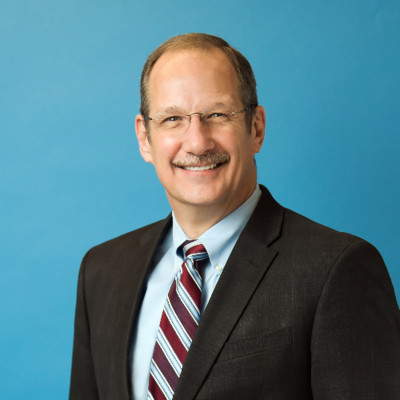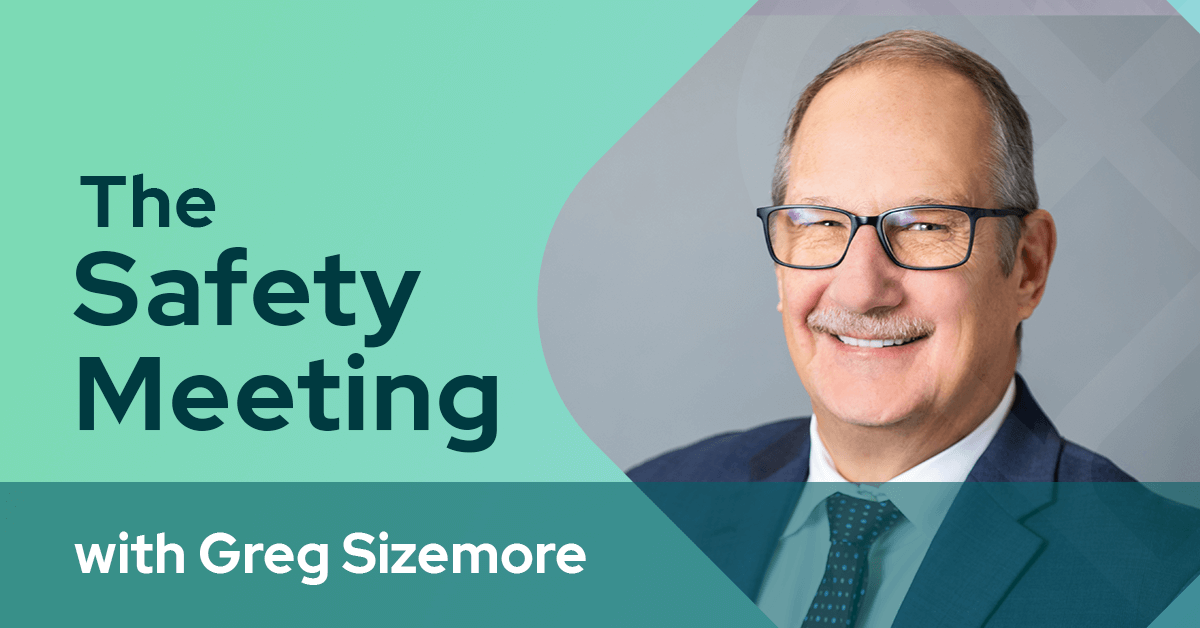Addressing Substance Abuse in the Workplace: An Interview with ABC’s Greg Sizemore

[00:00:30]
All right, Greg, well, you’ve become a regular at this point. We’re so excited to have Greg Sizemore from ABC back. How are you doing Greg?
I’m living the dream. I don’t know if it’s because I’m on your short list or I’m just always available, but glad to be back with you, Sage.
[00:00:44]
We love talking to you. I just love everything you always have to say. You are so inspiring, so glad to have you back. So today we’re gonna be talking about something really important and really relevant, which is substance abuse, prevention, and awareness.
And I know it’s something that’s near and dear to you. So can you start by telling me why this topic is so critical in the world of workplace health and safety?
Yes, but let me answer your question with a question for the audience if they’re listening- if your spouse, partner, mom, dad, son, or daughter was working on a construction project, you know, in what we can all agree is an industry that has inherent dangers.
If the work isn’t performed up to 100%, accuracy and detail, mental capacity, physical capacities, all of those things weren’t in place – wouldn’t you want your loved one to be working with somebody who is 100% in control of their physical and mental capacities? I know what the answer is long before you even answer the question.
It’s absolutely you would. So why is it critical to the construction industry, but it’s really every industry Sage, because people get hurt. Accidents happen. And in some cases, even a fatality occurs. Substances, both legal and illegal, impair, desensitize, and they often give this false sense of superpower to the user and that can lead to incidents and accidents.
And unfortunately it’s an extreme incident even to death. That’s why this is important to our industry.
[00:02:26]
Absolutely. I agree. So with that in mind, what can safety leaders do to prepare for and be mindful of substance abuse issues in their workplaces?
Well, they say repetition burns in your memory. So it’s educate, educate and educate more.
As an example, let’s consider this: substance abuse is responsible for 35% of all workplace injuries and fatalities, 35% of all absences in the workforce, between 38 to 50% of all worker compensation claims, and 40% of all project thefts, a 300% increase in medical cost compared to someone or an organization without a substance abuse problem or an organization that doesn’t have a substance abuse policy. An individual’s performance can decline by up to 67% as their potential WANs based upon the substances. So we’ve gotta make our workforce, our supervisors, those people out there on our projects, aware of what this really did. This carries a toll across the industry.
[00:03:37]
Yes, it does. Absolutely. And I think you’re right. That awareness is very much the first step. And can you speak to the usefulness and also maybe define it for our listeners who maybe don’t know the usefulness of reasonable suspicion forms for safety leaders?
Well, you know, as I was preparing for this, here’s what I like to say, word to the wise.
Know your state’s position and statutes. Simply throwing out a form and checking a box can be a legal nightmare waiting to happen. Many states, Sage have varying interpretations of reasonable suspicion and what an employer can or cannot do. Request and are, it can be narrowly defined or very specifically defined.
Additionally, you know, you have to understand that it can open up a very lengthy process that cannot be immediately initiated by the observer. See the cryptonite of this great intention is a lack of consistent application across an organization, a job site, or even the crews the employee works in, is a great piece of documentation to capture observances probably.
But what does the form bring to the worker? That’s simply walking up to them and asking, are you okay? Forms and policies while rightfully needed to reinforce compliance with discipline for noncompliance, I would prefer my say to professionals or supervisors to be comfortable enough to approach and address rather than simply filling out a form.
And again, let me reiterate this. There is a place and a time to document everything, but consistency when using these types of documentation are very critical.
[00:05:31]
Oh, absolutely. I think that having a reasonable suspicion form and using it sporadically, or, you know, between different managers and in different ways, different interpretations doesn’t do much.
But if it’s really consistent, it’s understood across the team and it’s being used in conjunction with conversation directly with your team. Then it can be a useful aid in keeping track of things. Say as that goes back to your other question, what do we do? We educate, we educate, we educate. If we’re gonna put this form out there, we need to educate and educate and educate on how to use these types of forms.
And in the end, if we do our job, well, hopefully the forms aren’t necessarily needed. But if the forms are needed, we know how to use them.
[00:06:12]
Well, that’s the case for a lot of our safety work, right. Is hopefully you never have to use any of it. Hopefully…
It’s kinda like a great insurance policy. Keep paying and pray you never have to use it.
[00:06:21]
That’s exactly right. So how do you think the issues and needs surrounding substance abuse have shifted in the last few?
Sage, I’m gonna ask the listeners to get their feet outta the aisle here for a second, because I’m probably going to step on a few toes. You see, our society is doing more damage in this space than they are good.
Now this may rub some of the listeners the wrong way, but I will say it anyway, just because something is legal, doesn’t make it okay. A national narrative and acceptance of marijuana is a great example. Our country has gone soft on substances. Think about this: 18 states and the District of Columbia now accept marijuana as a recreational or leisure activity. And 35 states and the districts of Columbia are handing out prescriptions to just about anyone who asks for them. Now here’s a bit more perspective again, and I’m going to take a few folks back on a journey in time. In 2017, the high times magazine, the cannabis Tokers Bible, if you will, wrote an article about a strain of cannabis known as the godfather OG – a strain with an incredible 35% THC.
Now that’s the hallucinogenic side of the marijuana. When the average THC for most weed back in those days was around 4%. Mm-hmm , that’s a 750% increase in THC in 2017.
[00:08:18]
That’s some serious business.
Yes. And today it is normal to find cannabis with a 20% THC on a practical industry corner, let alone some of the cannabis shops that people go into.
Now I’m not a chemist at all, Sage, real clear. But that stuff is potent enough to turn even the most seasoned partake into a zombie and worse yet an accident waiting to happen on a project. Yeah. And don’t even get me started about opioids in the workplace. People take those and in many cases they are certainly needed.
Even those with a prescription shouldn’t be working in hazardous conditions nor putting themselves or others at risk. So keep in. The opioid does nothing for the injury. It works in the brain, creating a condition where the user doesn’t feel the pain. And lastly, I’ll say this they’re on average 16,790 prescription overdoses by an opiate every year and an astounding 47,000 deaths as a result of those. Sage, these are substances far stronger than the baby aspirin prescriptions of years ago. So here it is, it’s our responsibility, or should I say it’s our duty as a group of safety professionals who care about this industry to create the conditions where our workforce can be assured that their teammates are 100% engaged at all times.
[00:09:52]
Absolutely. I think that you’re right with the opiate crisis where it is and the increased potency of THC. And you’re right there are plenty of legal substances that aren’t necessarily legal in the workplace. And especially if you’re operating heavy machinery. Or you have other people’s lives in your hands or whatever the case may be.
Those things at the very least should be left at home. If used at all. So what are your thoughts about the future of substance abuse, awareness and prevention in the workplace? Where do you wanna see us going as an industry moving forward with this issue?
Well, it sounds a little preachy when I say this, but I think maybe that little bit of charisma kind of lends itself to you keep inviting me back, maybe Sage, but as I stated, it is our duty to be leaders in this space.
And it boils down to just a few critical points that I will make by again, asking a question of the listeners. Do you want to be an employer of choice or the employer who allows substances to use on your projects to go unmonitored. Leadership really counts in this space. Leaders must address this as a complete cultural overhaul of their company. You can have a substance abuse policy with as many volumes as a set of encyclopedias, but if your culture, your entire organization, everyone in your workforce, and even the clients that you choose to work for, don’t see the commitment in this area by you and your leadership team. You’ll end up going the way of the encyclopedia salesman.
Educate everyone. It’s the second thing, especially your frontline leaders on what to look for, how to have the conversations, and most importantly, your company’s policies in these areas. Great craft professionals in the world will often fall short being a supervisor because they’re not equipped to do their job in their new role. So invest in them before they are promoted. That’s the key to success in a healthy and safe workforce.
[00:11:59]
Absolutely. I couldn’t agree more. Well, Greg, as always, it’s such a pleasure to have you on the podcast. I think that your wisdom is needed by all, and I always appreciate hearing it myself. So thank you so much.
It’s always a pleasure to be with you folks. Get out there and have a great and safe day.

